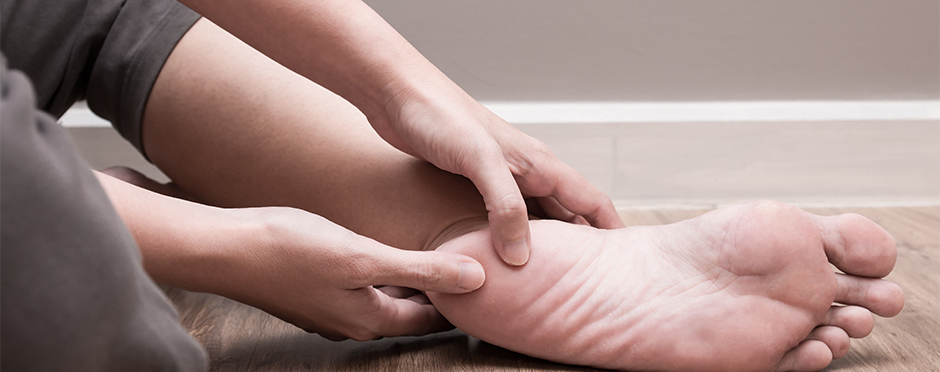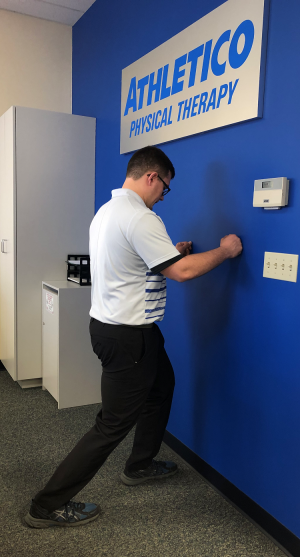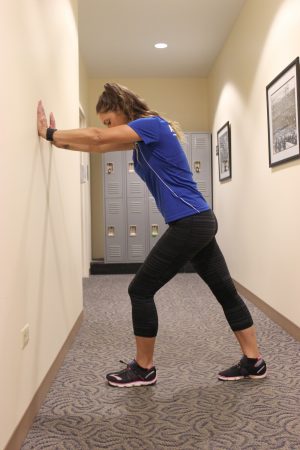
Plantar Fasciitis: Treat your Feet
Leave a CommentThe plantar fascia is a thick band of fibrous connective tissue on the bottom of the foot that extends from the heel to the toes. While this location ideally positions the plantar fascia to fulfill its role as a stabilizing structure, it ultimately predisposes the area to repetitive use and the potential for inflammation and chronic tissue changes.
Plantar fasciitis is one of the most common causes of foot pain. The condition impacts the plantar fascia and can be highly debilitating due to the locomotive necessity of ambulating on our feet. Common symptoms of the condition include:
- Heel pain at attachment of the plantar fascia
- Heel pain associated with initial ambulation in the morning or after prolonged sitting
- Increased pain with walking especially barefoot, standing, or high heeled or flat shoes
- Tightness in the calf muscles
It is important to note that plantar fasciitis does not need to be disabling, as there are several ways you can treat yourself, including:
Stretching calf muscles – While several factors may lead to plantar fasciitis, the primary cause is calf muscle tightness. This is due to the fact that the tendon blends into the plantar fascia at its shared attachment on the heel. Calf stretching is best accomplished by stretching both portions of the calf with the knee bent and straight as seen in the images below. Stretching improves mobility of the calf, enabling greater lengthening and therefore less traction at the shared attachment during gait. Additionally, foam rolling the calf and stretching or foam rolling the hamstring – which shares a common attachment with the calf, is also beneficial.
Mobilization of the plantar fascia – Chronic irritation of the plantar fascia leads to formation of fascial adhesions and therefore, mobilizing the area will improve pain and mobility with walking. Mobilization can be performed by rolling a ball (golf, rubber spiky, or tennis) on the area, massaging or stretching the bottom of the foot. Stretching is performed by holding the heel while pulling the toes toward the top of the foot.
Hip, ankle, and foot strengthening – Muscles of the entire lower leg are responsible for supporting the pelvis and leg during walking. Weakness in proximal muscles of the hip, pelvis and trunk increases stress on distal structures during weight bearing, as these muscles cannot adequately stabilize the leg in neutral. Therefore it is crucial to strengthen the hip abductors that support the pelvis, as well as abdominal, spinal, calf, ankle and foot muscles. Preferable exercises include side planks, side stepping with a resistance band around the ankles, heel raises and arch raises (attempting to pull the big toe toward the outer heel, raising the arch in a seated or standing position). Addressing improper running mechanics is also imperative.
Shoe wear/arch supports – Plantar fasciitis can occur in individuals with high or low arches and purchasing the appropriate foot wear can greatly reduce pain during walking. While some people will find relief with soft, slip on mules, others will benefit from a supportive shoe, arch support, or heel cup to unload and better support the plantar fascia. Having good shoe wear and avoiding barefoot walking will prevent repetitive irritation with walking.
Night splints and braces – A rigid night splint is issued by a physician, however, several other off-the-shelf braces that maintain the foot in a flexed position with the toes pointing up are available. By maintaining the foot in an upright position, night braces prevent contraction of the plantar fascia during sleep. This minimizes stretching, traction on the attachment, and pain when the foot is loaded with initial morning weight bearing (the hallmark feature of plantar fasciitis).
Rest and ice – Undoubtedly resting the feet and using ice during the acute stage help to minimize repetitive stress and inflammation of the plantar fascia. This is an essential component of an effective treatment program.
Should pain worsen, fail to improve, or continue to limit your daily activities, seeking proper evaluation and treatment is necessary. The physical therapists at Athletico have the knowledge and skills to get you back on your feet.
Physical therapy is usually the thing you are told to do after medication, x-rays or surgery. The best way to fix your pain is to start where you normally finish – with physical therapy at Athletico.
The Athletico blog is an educational resource written by Athletico employees. Athletico bloggers are licensed professionals who abide by the code of ethics outlined by their respective professional associations. The content published in blog posts represents the opinion of the individual author based on their expertise and experience. The content provided in this blog is for informational purposes only, does not constitute medical advice and should not be relied on for making personal health decisions.


